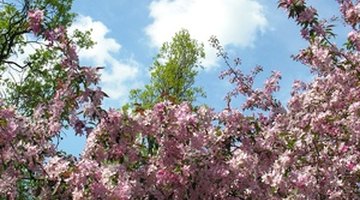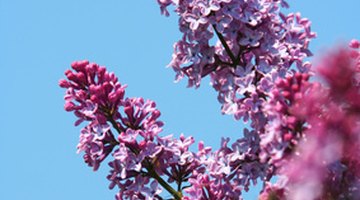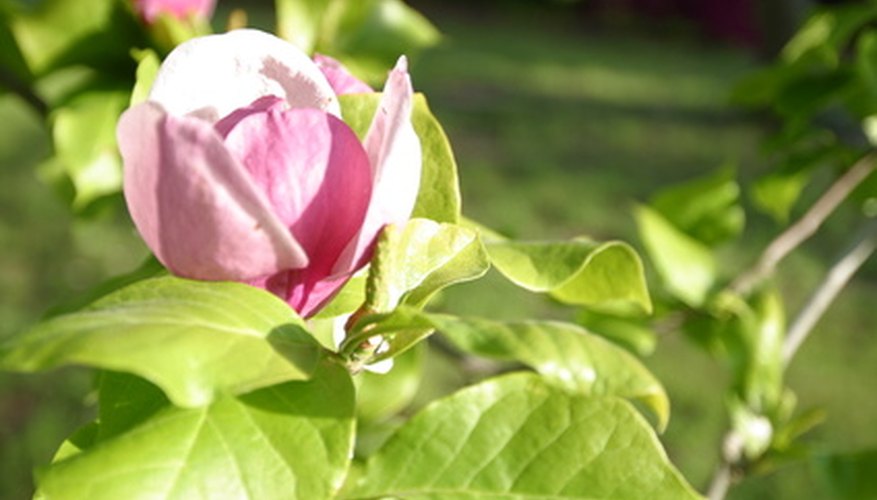Flowering trees add seasonal interest and beauty to any landscape. Many species have fruits that are edible or attract birds and other wildlife. Naturalised and native British trees with purple, lilac or rosy-purple blooms include magnolias, crape myrtle Catawba (Lagerstroemia indica) and eastern red bud (Cercis canadensis).
Saucer magnolia (Magnolia soulangiana)

Saucer magnolias have showy, cup-shaped flowers that appear before the leaves. Although shrubby by nature, this magnolia can be trained into a single-truck tree with pruning. Saucer magnolias are slow growing, but flower at an early age. This tree species will reach 7.5 m (25 feet) with an equally large spread. Saucer magnolias are best used as a specimen or lawn tree and display well in small groups, or against a background of evergreens. Distinctive cultivars include: 'Alba,' with compact, petals tinted light purple outside; 'Burgundy,' with early blooming, deep purple flowers; 'Lennei,' which feature dark purplish magenta flowers; and 'San Jose,' with early, fragrant, rosy-purple flowers.
- Saucer magnolias have showy, cup-shaped flowers that appear before the leaves.
- Saucer magnolias are slow growing, but flower at an early age.
Crape myrtle Catawba (Lagerstroemia indica L.)

One of the best purple flowering trees available, crape myrtle Catawba produces large, long lasting masses of dark purple, crepe-like flowers in summer. Crape myrtle Catawba foliage has a bronze hue in spring, turns bright green in summer, then changes to orange-red in the autumn. Reaching 4.5 m (15 feet) with a 3 m (10 foot) crown, Crape Myrtle Catawba prefers full sun, good well-drained heavy loam and a regular watering schedule. This tree is mildew resistant and deer repellent.
- One of the best purple flowering trees available, crape myrtle Catawba produces large, long lasting masses of dark purple, crepe-like flowers in summer.
- Crape myrtle Catawba foliage has a bronze hue in spring, turns bright green in summer, then changes to orange-red in the autumn.
Red bud (Cercis canadensis)

Red bud is a 6 to 9 m (20 to 30 foot) tree that produces an abundance of purple blossoms in the spring, large heart-shaped leaves during the summer and long seed pods in the autumn. Red bud is effective as a single specimen or in groupings. It also makes a good shrub border and is especially striking in woodland and naturalised landscaping. Red bud has low water requirements and is highly tolerant to salt and alkali soils.
- Red bud is a 6 to 9 m (20 to 30 foot) tree that produces an abundance of purple blossoms in the spring, large heart-shaped leaves during the summer and long seed pods in the autumn.
- It also makes a good shrub border and is especially striking in woodland and naturalised landscaping.
